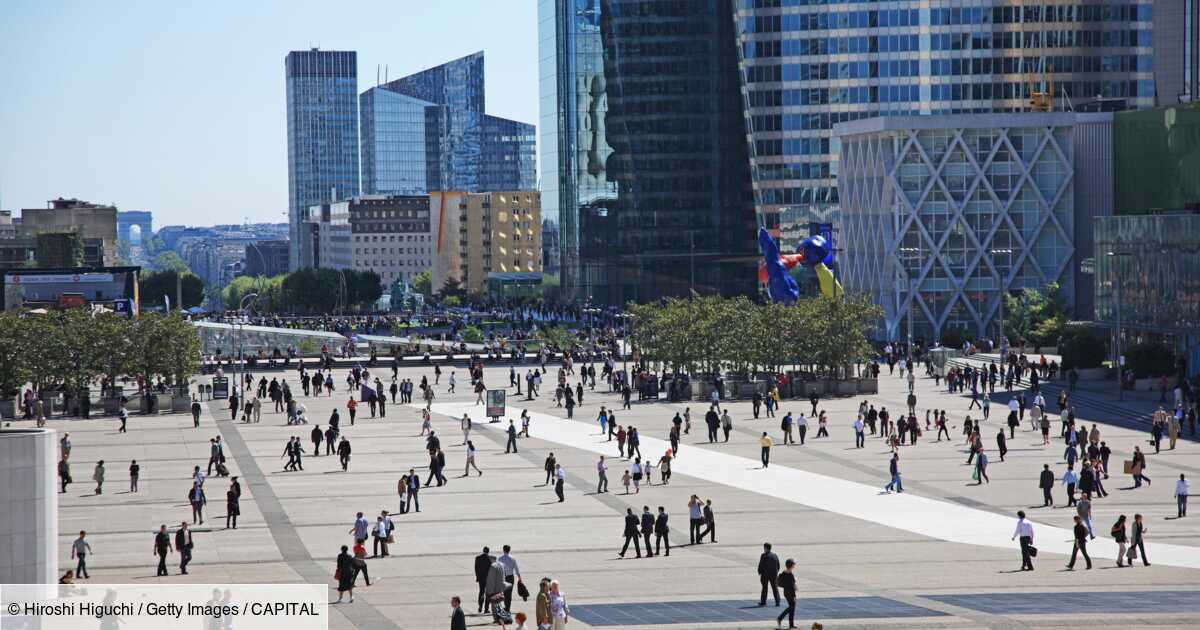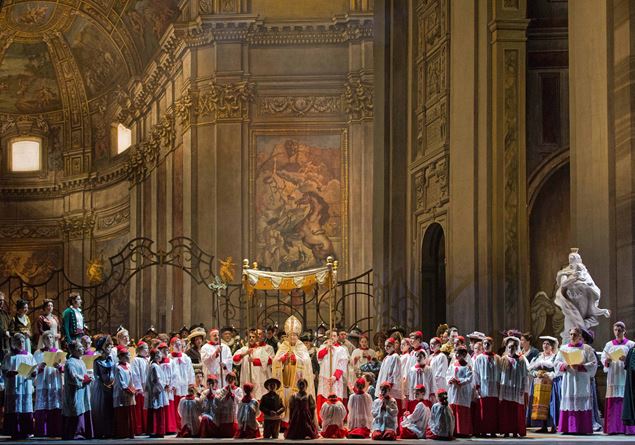Michele Mariotti at Costanzi, photographed by Fabrizio Sansoni
One hundred and twenty-five years ago on this day, 14 January 1900, it was a Sunday, the first ever performance of Tosca, the most Roman of Giacomo Puccini’s masterpieces, took place at the Costanzi theater in Rome, an opera set in the church of Sant’Andrea della Valle, Palazzo Farnese and Castel Sant’Angelo.
“I will not discuss the ‘genre’ of the work, which certainly does not belong to the boring genre” the critic of the Corriere della Sera after the first performance began in chaos. “During the performance of the first pages of the work,” wrote the Courier“the crowd packed in the hall gets agitated and stands so as to cause whispers and noises, which disturb the audience. Soon silences and loud calls arise, so that the director Maestro Mugnone suspends the performance of the opera and lowers the curtain. Once calm has returned, he gives the order for the tarpaulin to be raised and the show resumes without further trouble.”
Sifting through the horns of the time, a curious detail emerges. 1900 was also a jubilee year for the Church and for the occasion a newspaper of the time, the “Voce della Verità” suppressed the tetral column (evidently judged inappropriate during a Holy Year) and thus was unable to review the “premiere” of ‘work.
Tonight Tosca returns to the stage in the place of its debut and for the occasion the President of the Republic, Sergio Mattarella, will be present at Costanzi. Last November, on the occasion of the centenary of Puccini’s death, the Head of State declared that the Tuscan composer “was able to admirably combine facets of different artistic and melodic currents, establishing himself as a multifaceted author of great importance and leaving an inestimable legacy to history musical”.
On the podium he conducts Michele Mariottithe musical director of the Rome Opera, who returns to interpret the title after directing it for the first time in the summer of 2023 during the Capitoline tour in Japan, and then in December of the same year on the podium of the Costanzi.
The stage version is that of the first ever performance, reconstructed by the Capitoline foundation in collaboration with the Archivio Storico Ricordi in 2015 starting from the original sketches and since then on stage regularly at the Costanzi with the direction of Alessandro Talevi. In the role of the protagonist Saioa Hernándezwhich just like Tosca debuted at the Rome Opera in 2021, while Cavaradossi is embodied by Gregory KundeOtello was highly appreciated in the 2023/24 season of Costanzi. Gevorg Hokobyan it is instead Baron Scarpia. After the premiere on the 14th, broadcast live on Radio3 Rai, another four repeats are scheduled from Thursday 16th to Sunday 19th January. Mariotti also directs Tosca on January 16th, while on the dates of January 17th, 18th and 19th Francesco Ivan Ciampa takes the podium, making his debut at the Rome Opera with the Puccini title.
In the performances on January 17th and 19th, Tosca is played by Anastasia Bartoli, Cavaradossi by Vincenzo Costanzo and in the performance on the 19th in the role of Scarpia there will be Daniel Luis de Vicente. The cast is completed by Luciano Leoni as Cesare Angelotti, Domenico Colaianni as the Sacristan and Saverio Fiore as Spoletta. The original sets and costumes of Tosca, designed by Adolf Hohenstein, were reconstructed by Carlo Savi and Anna Biagiotti respectively. Lights by Vinicio Cheli. Orchestra and Chorus, directed by Ciro Visco, are from the Teatro dell’Opera di Roma. With the participation of the Costanzi School of Choral Singing.
On the occasion of the 125th anniversary of the premiere of Tosca, a plaque commemorating the birth of Puccini’s masterpiece will be unveiled in the theater on the evening of the premiere. To explore and delve deeper into its genesis, the Rome Opera is staging the exhibition Tosca 125: Beyond the stagewith precious documents, sketches, photographs, artefacts and costumes from the Ricordi Historical Archive and from its own collections. An engaging exhibition itinerary in seven stages, which reveals the origins of Tosca in the drama of the same name by Victorien Sardou admired by Puccini; tells little-known aspects of the work of the composer, his publisher and his librettists; illustrates how the sets, costumes and props of Adolf Hohenstein’s original staging were conceived; and narrates through audiovisual contributions how the Teatro dell’Opera di Roma brought the first Tosca back to life, in its laboratories and on its stage. On the occasion of the 125th anniversary of the premiere of Tosca, a plaque commemorating the birth of Puccini’s masterpiece will be unveiled in the theater on the evening of the premiere. To explore and delve deeper into its genesis, the Opera di Roma is staging the exhibition Tosca 125: Beyond the scene, with precious documents, sketches, photographs, artefacts and costumes from the Ricordi Historical Archive and its own collections. An engaging exhibition itinerary in seven stages, which reveals the origins of Tosca in the drama of the same name by Victorien Sardou admired by Puccini; tells little-known aspects of the work of the composer, his publisher and his librettists; illustrates how the sets, costumes and props of Adolf Hohenstein’s original staging were conceived; and narrates through audiovisual contributions how the Teatro dell’Opera di Roma brought the first Tosca back to life, in its laboratories and on its stage.
To involve the territory and the weakest and most fragile sections of society, Tosca, on the day of its 125th birthday, will be filmed and broadcast via streaming at the Gemelli Polyclinic, in various entities linked to Caritas in Rome – from the canteen to the “Don Luigi” hostel of Liegro”, passing through the Santa Giacinta shelter – the Istituto Romano San Michele, the Teatro Patologico and other places. To these is added the Italian Cultural Institute in London.








